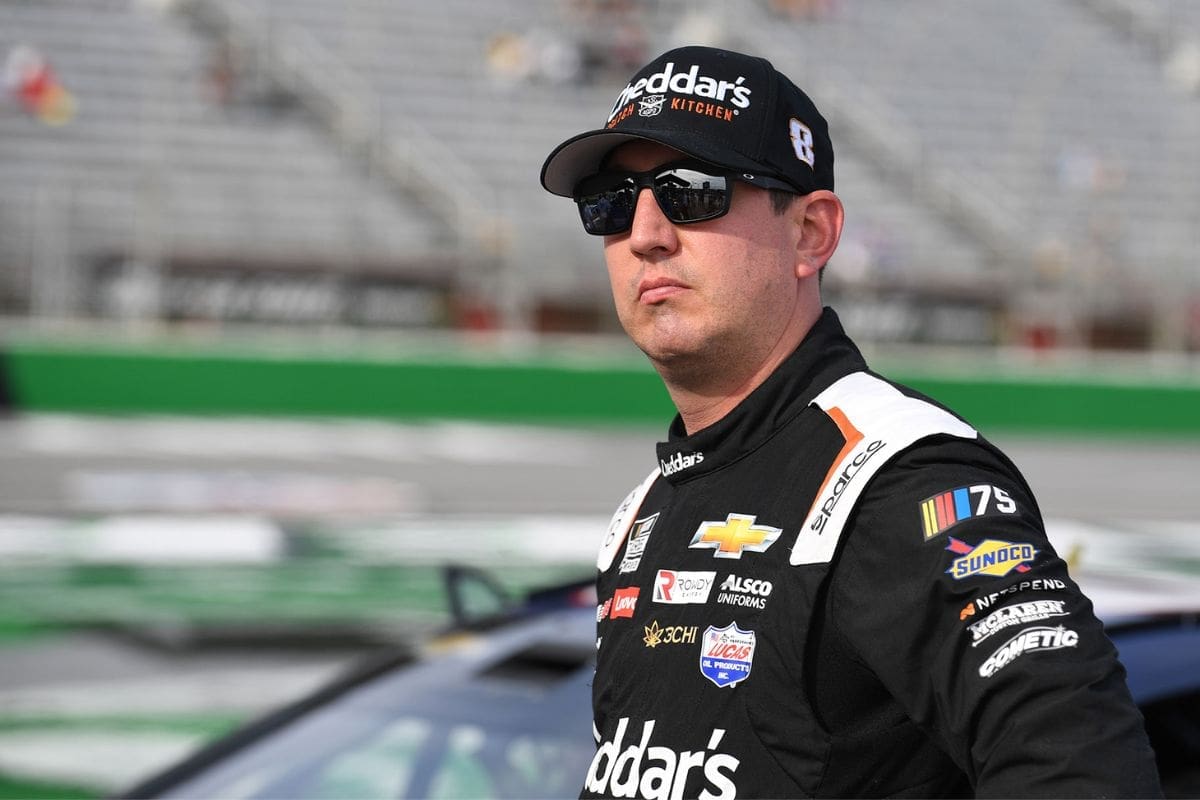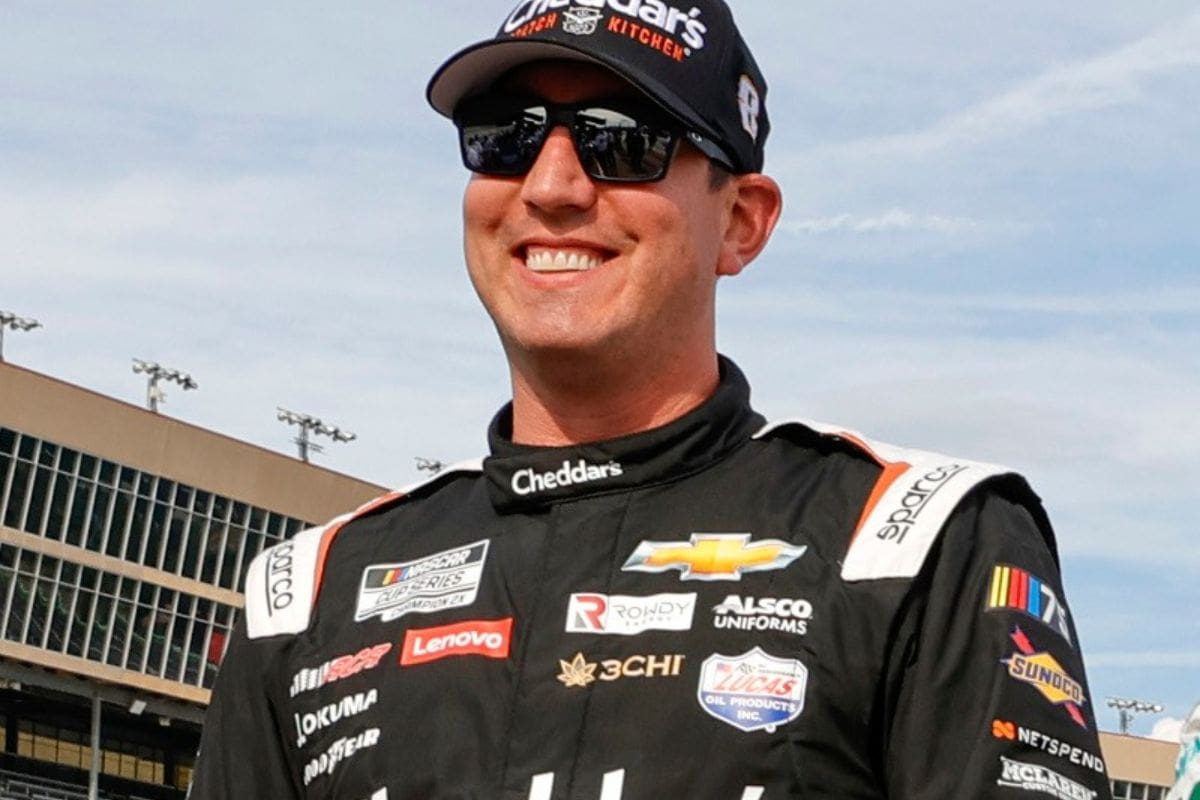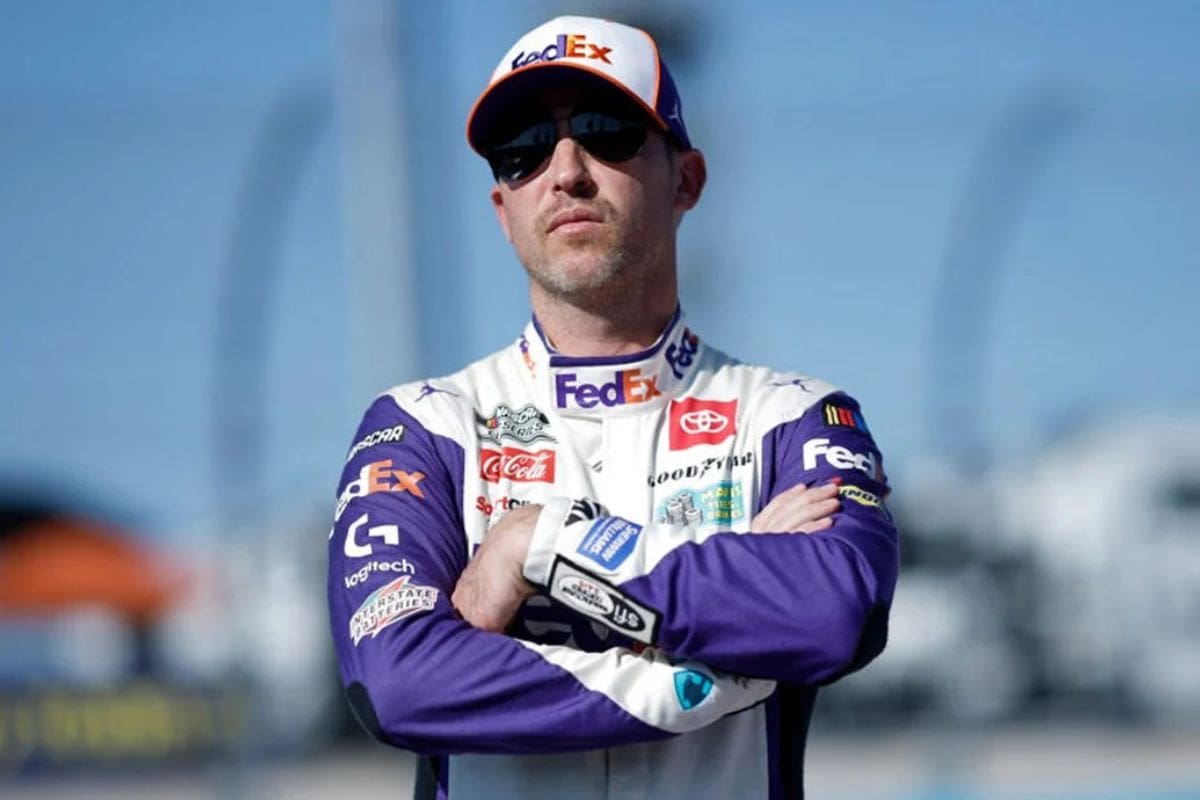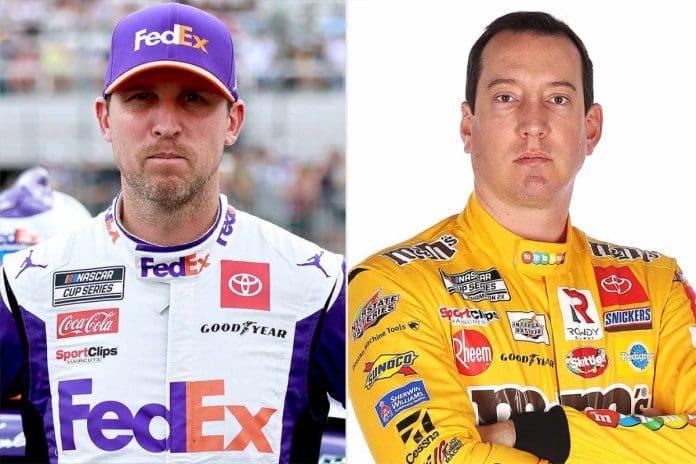Kyle Busch’s Take on Denny Hamlin’s Move: Kyle Busch’s critical analysis of Denny Hamlin’s actions in Toyota Owners 400 at Richmond Raceway uncovers a complex layer of NASCAR racing ethics. By analyzing the controversy, Busch grapples with the delicate balance between strategic ingenuity and questionable sportsmanship, shedding light on the ongoing discourse within the NASCAR community. His insights shed light on the delicate balance between innovative racing tactics and the sport’s regulatory framework. Busch’s perspective, torn between admiration for Hamlin’s cunning and the necessity for clear guidelines, represents the ongoing discourse on sportsmanship versus spectacle in NASCAR.
Key Takeaways
- Kyle Busch provides a clear analysis of Hamlin’s controversial tactics at Richmond, highlighting the importance of strategy and leader’s advantage.
- Despite admiration for Hamlin’s approach, Busch is torn on the need for NASCAR to regulate such tactics, reflecting a broader debate on racing ethics.
- Busch acknowledges the role of officials’ discretionary power and the racing rules’ ambiguity, emphasizing the complexity of decision-making in NASCAR.
- He approves of Hamlin’s villainous character within NASCAR, recognizing its impact on psychological warfare and fan engagement.
- Busch’s views encapsulate the ongoing debate in NASCAR between innovation, sportsmanship, and the importance of maintaining a competitive yet fair racing environment.
Denny Hamlin’s Controversial Tactics at Richmond Raceway
At Richmond Raceway, Denny Hamlin’s utilization of tactics that skirted the edge of legality has sparked a fervent debate within the NASCAR community, highlighting a divide between those who decry his actions as outright cheating and those who adopt a more mature perspective. This controversy isn’t merely a matter of rule interpretation; it’s a litmus test for the ethical boundaries of competitive racing. Hamlin’s strategies, while not explicitly violating the letter of NASCAR’s regulations, certainly flirt with the spirit of fair competition, raising questions about the integrity of the sport and the lengths to which drivers will go to secure a win.
The divide within the community is stark. On one side, some purists argue that any deviation from the strict adherence to rules tarnishes the sport’s reputation and undermines the skill and talent of its competitors. They view Hamlin’s actions as a slippery slope, potentially opening the door to more egregious forms of rule-bending that could fundamentally alter the nature of NASCAR racing. On the other side, veterans like Kevin Harvick represent a more pragmatic approach. They understand that racing is as much about strategy and psychological warfare as it is about speed and technical skill. From this vantage, Hamlin’s tactics are not a departure from the ethos of racing but an embodiment of it—pushing boundaries to achieve greatness.
This debate is not just about Hamlin or Richmond Raceway; it’s an example of a larger conversation about innovation, tradition, and the evolving ethos of competitive sportsmanship in NASCAR. As the community grapples with these issues, it becomes clear that the line between strategic ingenuity and unsportsmanlike conduct is as blurred as ever.

Kyle Busch’s Analysis of Hamlin’s Actions
Following the intense debate over Denny Hamlin’s contentious tactics at Richmond Raceway, Kyle Busch offers his perspective, grounding his analysis in seasoned experience. Busch, familiar with Hamlin’s racing strategies, dissected the Richmond incident with precision, offering insights that suggest a complex interplay of rules, strategy, and sportsmanship.
Busch’s analysis depends on several key points:
- Anticipation and Strategy: Hamlin, comprehending the tendencies of his competitors, aimed to preemptively counteract their moves. By accelerating early, Hamlin sought to unsettle his rivals, gaining a critical edge in the final moments of the race.
- Leader’s Advantage: As the race leader, Hamlin was in a position to dictate the pace. Busch argues that delaying acceleration until the end of the restart zone would only serve to make Hamlin’s intentions more predictable to trailing drivers, thereby diminishing his advantage.
- Rules and Interpretation: The ambiguity of racing rules and their enforcement plays a significant role. Busch points out that while rules are essential, their interpretation and application can vary, leaving room for strategic tactics within the boundaries set by officials.
- Official’s Discretion: NASCAR’s decision not to penalize Hamlin, despite the controversy, highlights the discretionary power officials hold. This discretion, while necessary, adds a layer of unpredictability to the sport.
“Those guys are all still trying to edge up and get that half-a-mile-an-hour advantage, to just when Denny accelerates, they can accelerate…Denny is very smart. He is very calculated, he understands a lot of things very well. He is probably looking in his mirror or looking in his rear view screen, and seeing this happening around him. So he wants to go early to put those guys back on their heels. I believe that’s what he did”. (BusCh)
Kyle Busch’s Conflicting Views on Sanctioning Hamlin
Analyzing the main aspect of the matter, Kyle Busch’s stance on whether Denny Hamlin’s controversial tactics merit regulation reveals a complex web of personal admiration and regulatory ambiguity. Busch finds himself at a crossroads, torn between his appreciation for Hamlin’s audacious approach to racing and the potential need for oversight. This duality highlights a broader conversation within NASCAR about the balance between individual flair and collective order.
Busch’s hesitation to fully endorse regulating Hamlin speaks to a balanced understanding of the sport’s dynamics. On one hand, the antagonist persona that Hamlin has cultivated could be seen as an essential injection of personality and rivalry that NASCAR benefits from. It draws attention, sparks debates, and fuels fandom in ways that sanitized competitions cannot. On the other hand, there’s the unchanging necessity of ensuring fair play and safety on the track, principles that are foundational to the integrity of the sport.
This ambivalence points to a deeper issue within competitive racing – the difficulty of codifying the limits of strategic aggressiveness without diluting the sport’s inherent unpredictability and excitement. Busch’s conflicted views mirror the broader NASCAR community’s struggle with these questions. It’s a delicate balancing act between celebrating the characters who make the sport compelling and maintaining the regulatory frameworks that guarantee its legitimacy.

“So I don’t know, rules are rules. If I’m a rule guy, and everybody wants to go by black and white, then you gotta call it, you gotta penalize the guy.” (BusCh)
Kyle Busch’s Approval of Hamlin’s Villainous Character
Kyle Busch’s embrace of Denny Hamlin’s emergence as NASCAR’s newest antagonist offers a revealing glimpse into the complex dynamics of rivalry and personality within the sport. This acceptance of Hamlin’s role illuminates several key aspects:
- Shifting Dynamics: Busch’s history as NASCAR’s villain provides a unique perspective on the fluid nature of fan perception and the roles drivers play in the narrative of the sport.
- Psychological Warfare: Busch’s approval of Hamlin’s tactics highlights the importance of mental strategy in racing. Embracing the villain role can be a powerful tool, disrupting opponents’ focus and altering the competitive landscape.
- Fan Engagement: The transformation from villain to fan favorite for Busch, and vice versa for Hamlin, brings attention to the evolving relationship between drivers and their audiences. This shift serves as a reminder of the sport’s deeply interactive nature, where public perception can change as rapidly as the outcome of a race.
- Team Dynamics: While Busch is at peace with Hamlin’s tactics, the tension with teammate Christopher Bell indicates that internal team dynamics can be just as complex as the rivalries on the track.

“If you’re the leader and you’re in that position, what are you supposed to do? If Denny just sits there and waits till the end of the restart zone, the more you wait, the more those guys know you’re going to go. Because the flag man is gonna throw the green flag by the time you get to the second line.” (BusCh)
News in Brief
The examination of Denny Hamlin’s controversial tactics at Richmond Raceway, as explained by Kyle Busch, offers clear insight into the dynamics of competitive racing.
Busch’s analysis reveals a complex interplay between competitive aggression and sportsmanship, showcasing the ambiguity in sanctioning such actions.
Additionally, Busch’s ambivalence towards Hamlin’s villainous persona highlights the intricate balance between personal ethics and the theatrical elements inherent in professional sports, thereby enriching the discourse on sportsmanship in NASCAR.
Our Reader’s Queries
Q: What did Kyle Busch do in NASCAR?
A: Kyle Busch holds the record for the most all-time wins in all three of NASCAR’s national touring series, with a total of 230 victories as of February 24, 2024. Additionally, he set the record for the most Xfinity Series wins in a season with 13 in 2010 and holds the overall record with 102 wins in the series.
Q: What did Denny Hamlin do in NASCAR?
A: As a driver, Denny Hamlin has clinched a total of 52 NASCAR Cup Series victories. Notably, he secured wins in prestigious events like the Coca-Cola 600 in 2022 and the Daytona 500 in 2016, 2019, and 2020. Hamlin’s back-to-back Daytona 500 victories place him among a select group including Richard Petty, Cale Yarborough, and Sterling Marlin.
Q: Why is Kyle Busch allowed to race?
A: Although Kyle Busch is prohibited from driving his own car on public roads due to his lack of a driver’s license, he is permitted to compete in NASCAR races. Unlike driving on public roads, NASCAR does not require drivers to possess a driver’s license to participate in races.
Also Read: Kyle Busch Uncovers Toyota Dominance: Insider Insight!

